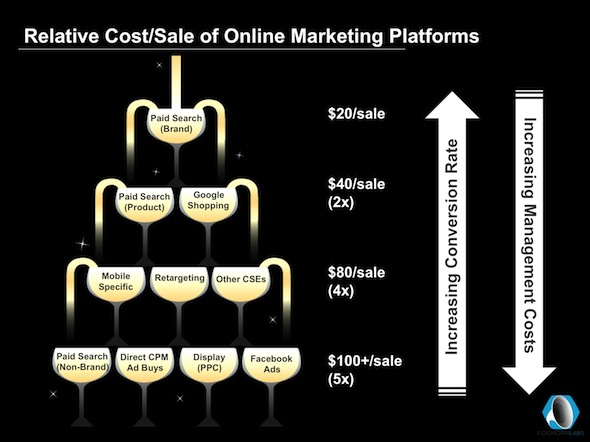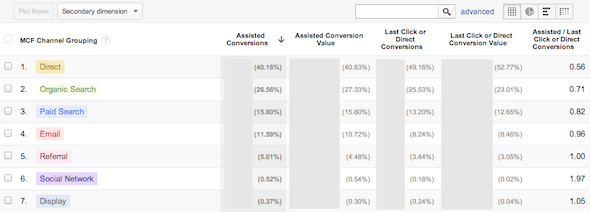One of the most common questions we get from clients is:
“if we can secure additional PPC budget, where should it be allocated?”
Pay per click (PPC) channels capable of generating a low cost per sale have limited traffic. As a result, growing businesses must look elsewhere for incremental traffic. Among keyword-based ad campaigns, branded keywords usually have the lowest cost per sale because users searching for branded terms tend to have at least one of the following qualities:
 The cost per sale numbers referenced above are relative and reflect averages across anonymous direct-to-consumer PPC accounts we manage. Using the cost per sale of Google Ads brand terms as a base, in this case $20, you could assume:
The cost per sale numbers referenced above are relative and reflect averages across anonymous direct-to-consumer PPC accounts we manage. Using the cost per sale of Google Ads brand terms as a base, in this case $20, you could assume:

- they are brand-loyal
- they are return customers
- they heard about the brand by word-of-mouth
- they discovered the brand’s products through a product review or article
 The cost per sale numbers referenced above are relative and reflect averages across anonymous direct-to-consumer PPC accounts we manage. Using the cost per sale of Google Ads brand terms as a base, in this case $20, you could assume:
The cost per sale numbers referenced above are relative and reflect averages across anonymous direct-to-consumer PPC accounts we manage. Using the cost per sale of Google Ads brand terms as a base, in this case $20, you could assume:
- Cost per sale for product terms would be approximately 2x ($40)
- Cost per sale for retargeting on the Google Display Network will be 4x ($80)
- Cost per sale for non-brand search terms, display and social media ads would be 5x or more ($100+)

Conversions > Multi-Channel Funnels > Assisted Conversions
